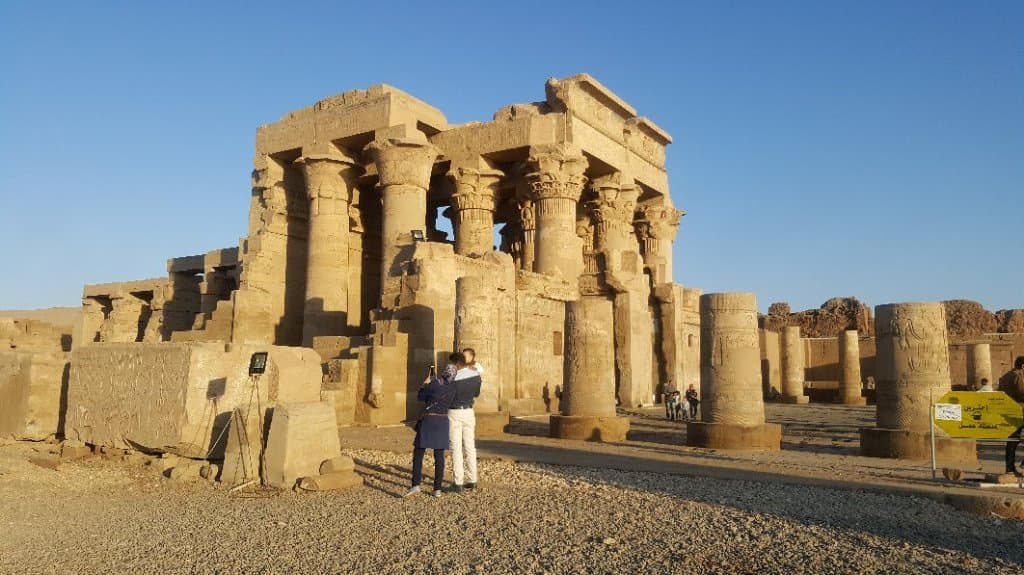
Kom Ombo Temple
A unique Ptolemaic double temple dedicated to Sobek and Horus, famed for its ancient surgical tool reliefs and mummified crocodiles.
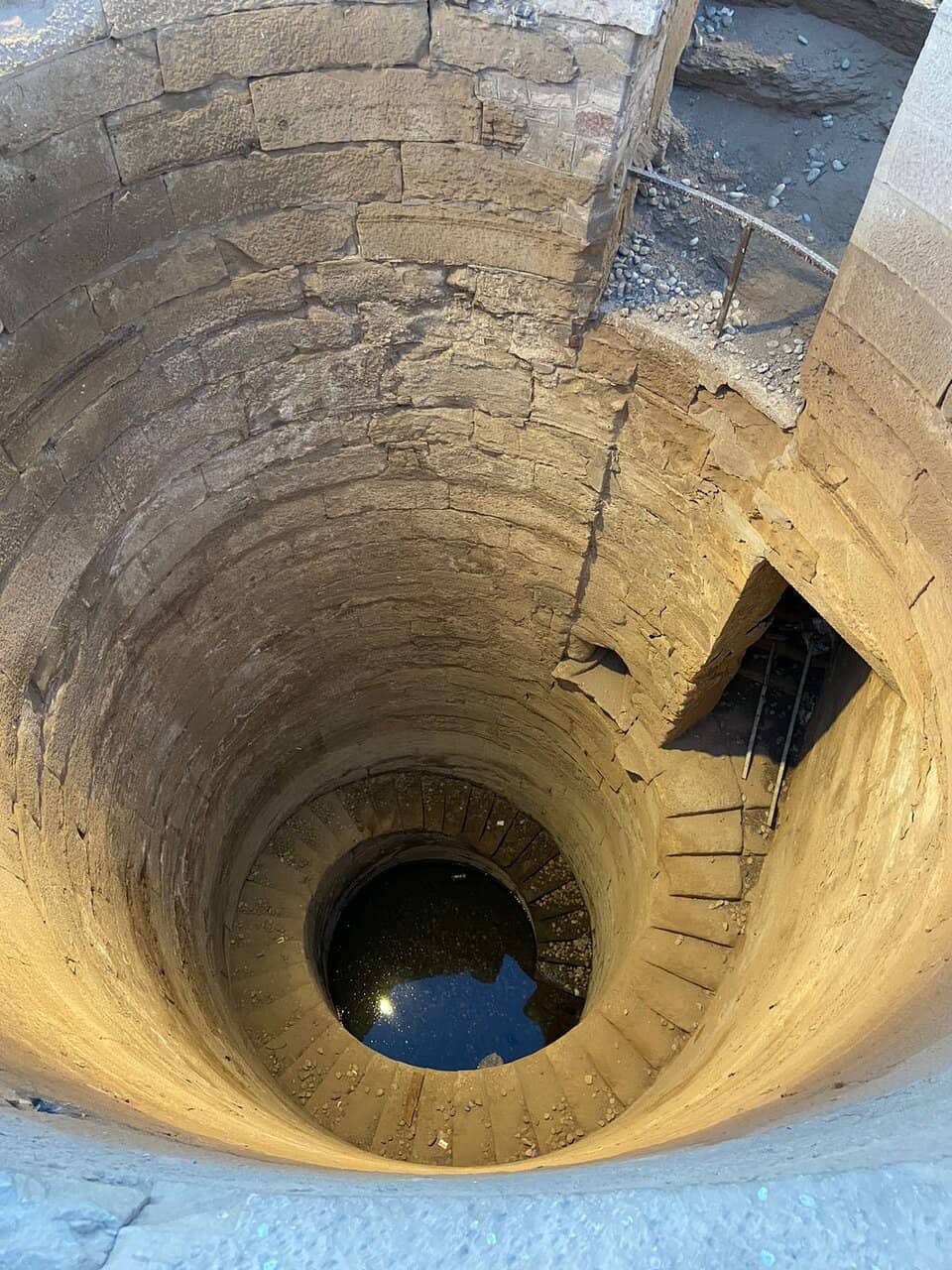
Highlights
Must-see attractions
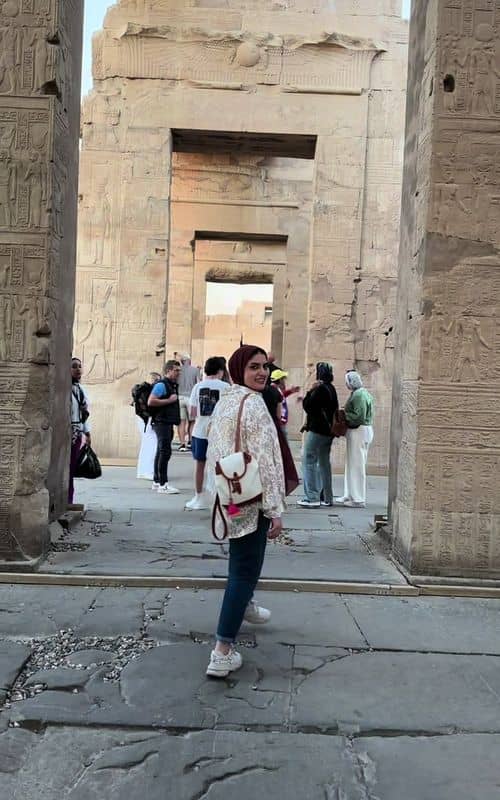
Social
From TikTok & Reddit
Best Time
Magical sunset glow

Kom Ombo Temple
Best Time
Magical sunset glow

Highlights
Must-see attractions
A unique Ptolemaic double temple dedicated to Sobek and Horus, famed for its ancient surgical tool reliefs and mummified crocodiles.
"By far the best temple we visited in Egypt. Absolutely breathtaking at night!"
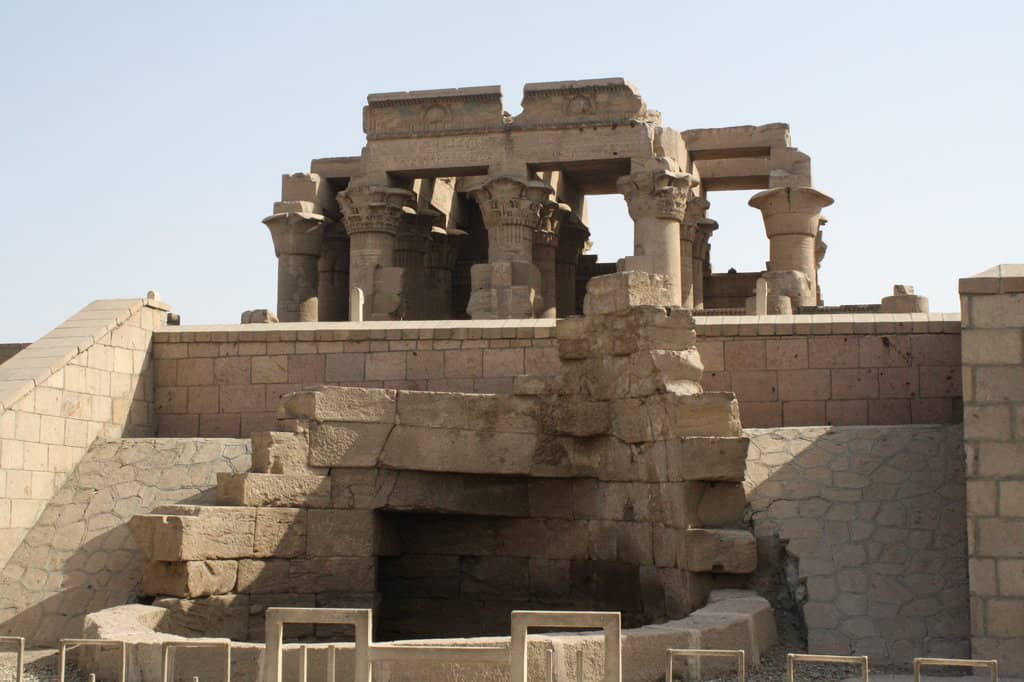
🧥 Bring a Windbreaker
Evenings can be windy and cold, especially in March. Pack layers for comfort.
🐊 Don't Skip the Crocodile Museum
It's small but fascinating, often included with your temple ticket.
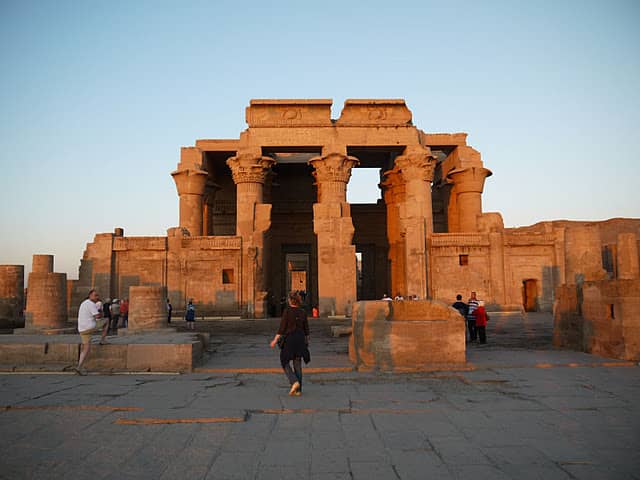
Highlights
Discover the most iconic attractions and experiences
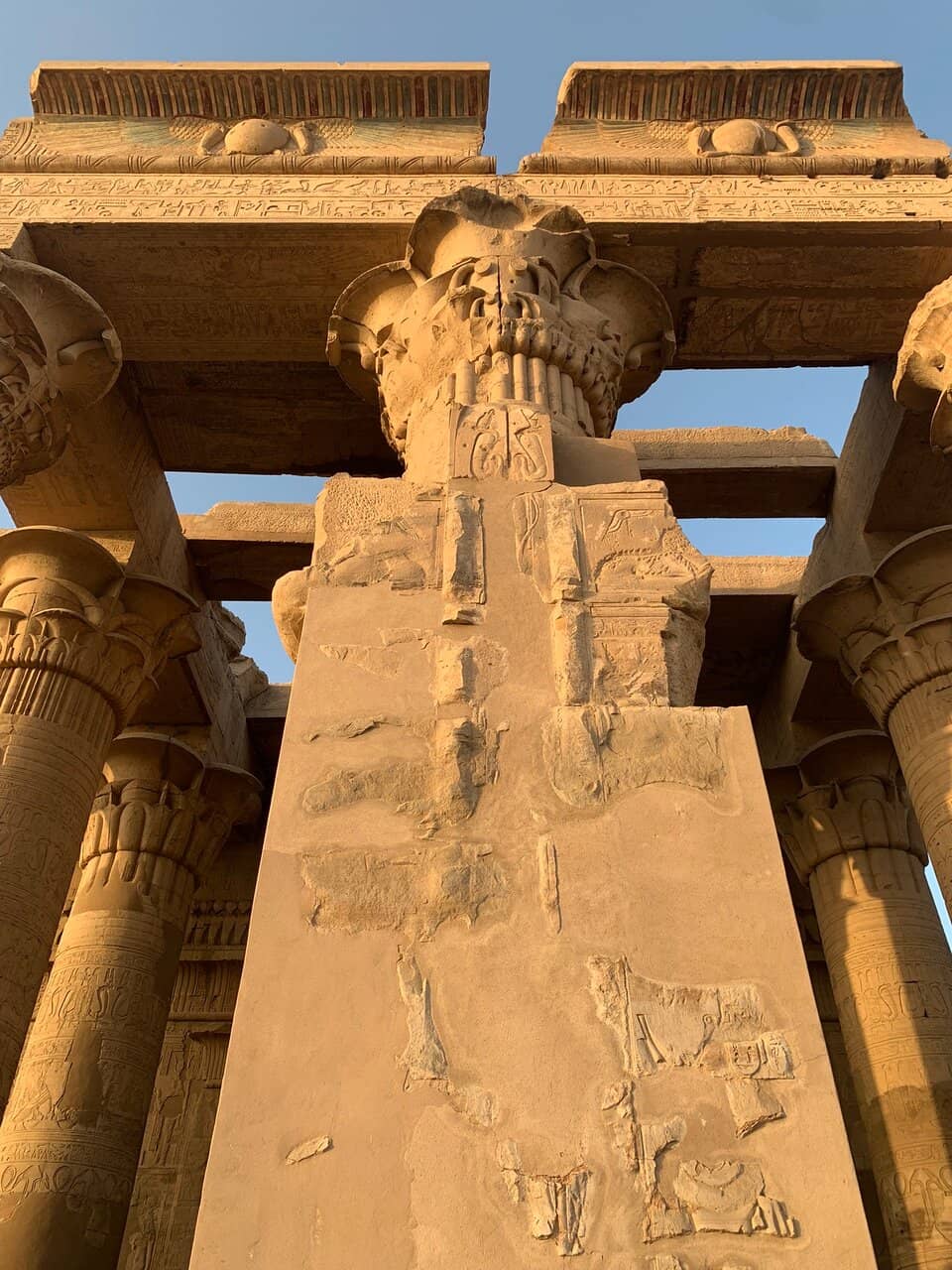
The Unique Double Temple Design
Central Axis
Marvel at the symmetrical layout, with twin entrances, halls, and sanctuaries dedicated to Sobek and Horus.
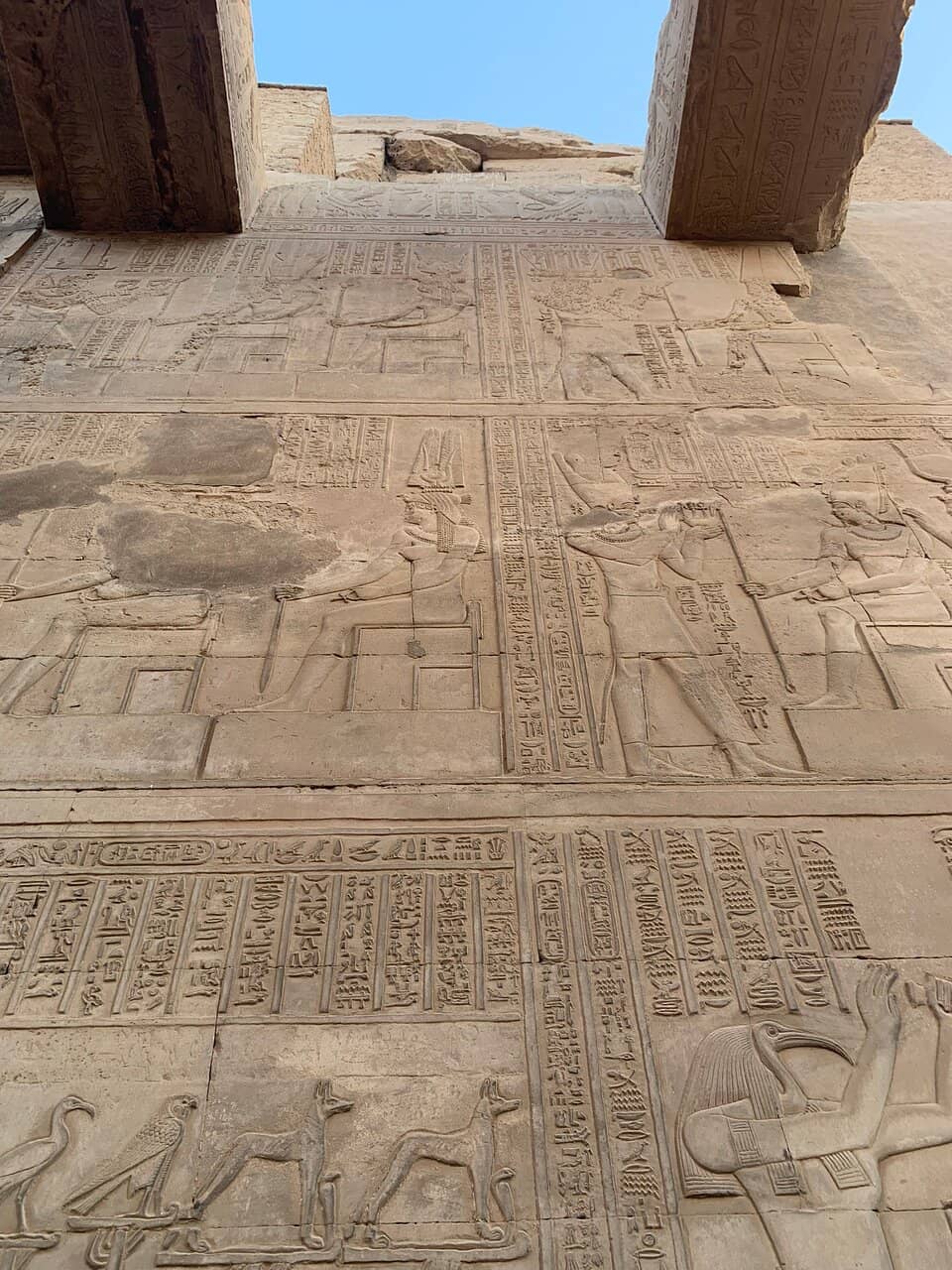
Ancient Surgical Tool Reliefs
Temple Walls
Discover intricate carvings depicting surgical instruments, showcasing advanced ancient Egyptian medicine.
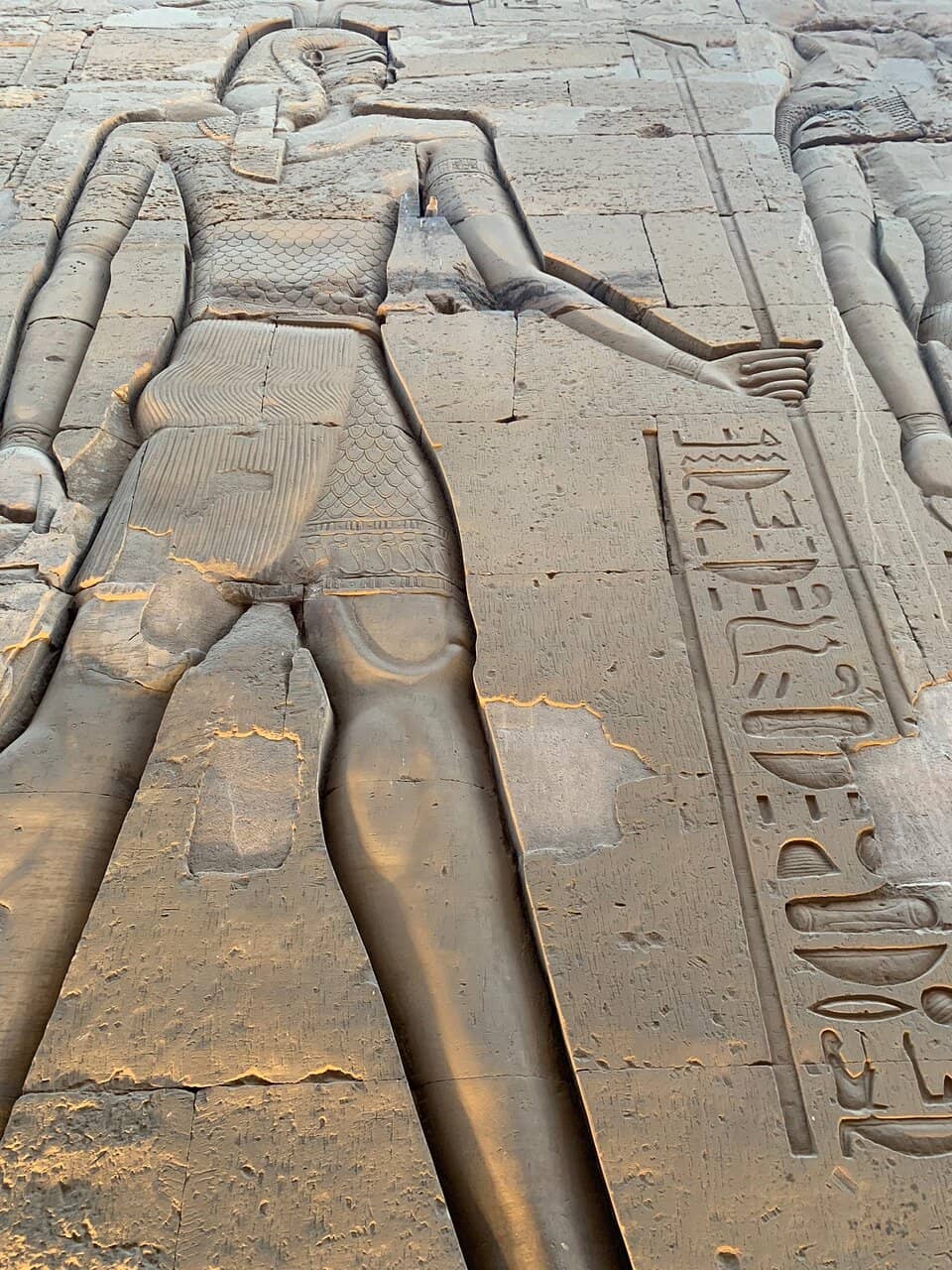
Mummified Crocodile Museum
Adjacent to Temple
See hundreds of mummified crocodiles, a testament to the sacred status of the god Sobek.
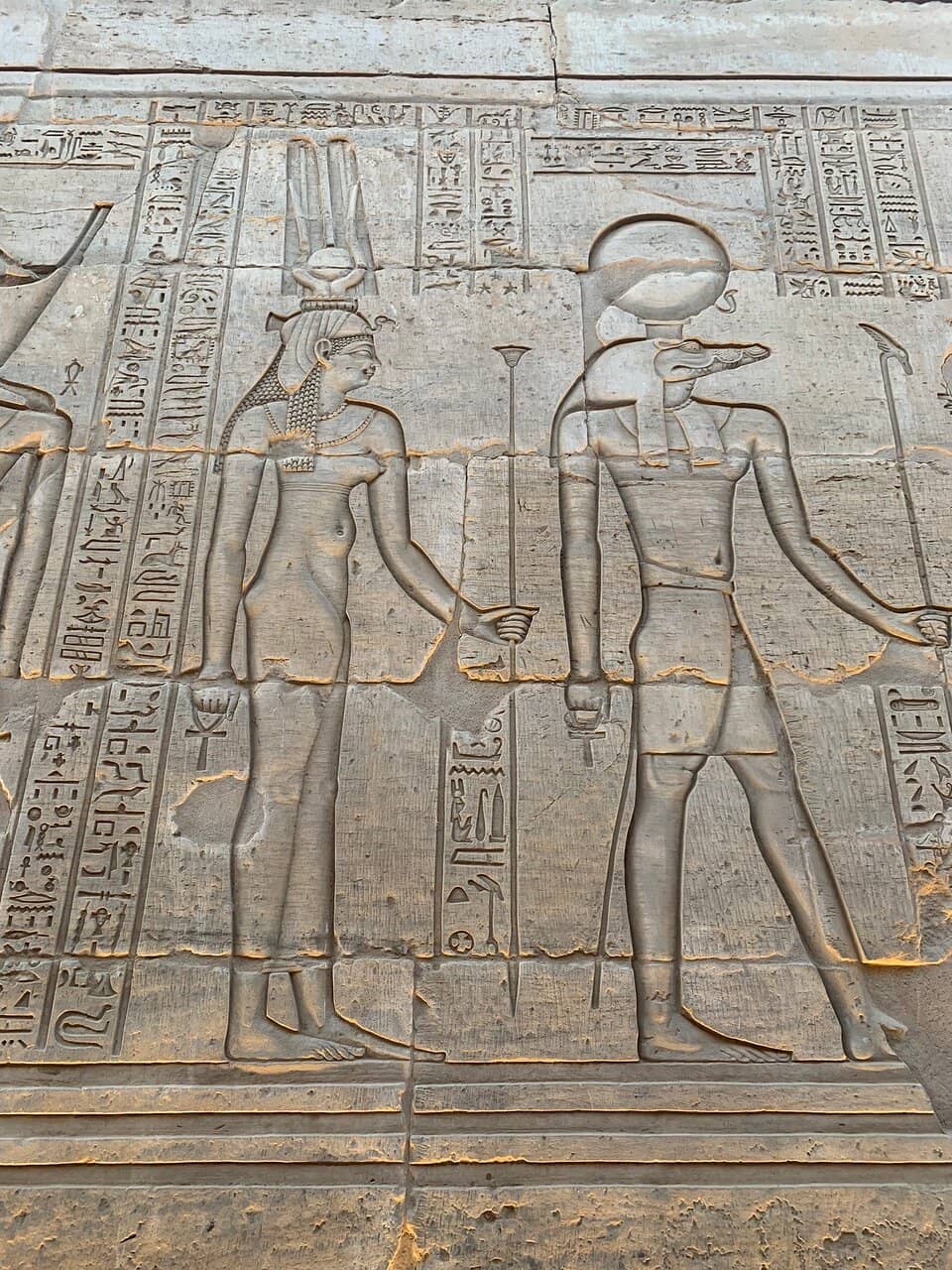
Sunset Views over the Nile
Temple Exterior
Experience the temple bathed in golden light as the sun sets over the majestic Nile River.
Plans like a pro.
Thinks like you
Planning Your Visit
Timing is Key for the Best Experience
Don't Miss the Crocodile Museum
Best Times
Insider Tips
from TikTok, Instagram & Reddit
🧥 Bring a Windbreaker
Evenings can be windy and cold, especially in March. Pack layers for comfort.
🐊 Don't Skip the Crocodile Museum
It's small but fascinating, often included with your temple ticket.
🌅 Aim for Sunset
The temple glows beautifully at sunset, offering picturesque views.
🚶♀️ Explore with a Guide
Guides share fascinating details about the dual deities and history.
Tips
from all over the internet
🧥 Bring a Windbreaker
Evenings can be windy and cold, especially in March. Pack layers for comfort.
🐊 Don't Skip the Crocodile Museum
It's small but fascinating, often included with your temple ticket.
🌅 Aim for Sunset
The temple glows beautifully at sunset, offering picturesque views.
🚶♀️ Explore with a Guide
Guides share fascinating details about the dual deities and history.
📸 Capture the Details
Focus on the unique reliefs, especially the surgical tools.
What Travellers Say
Reviews Summary
Visitors consistently praise Kom Ombo Temple as a highlight of their Egyptian journey, often citing its unique double-temple design and the fascinating insights into ancient medicine and crocodile worship. The sunset views and the adjacent Crocodile Museum are frequently mentioned as particularly memorable aspects. While some find it smaller than other major temples, its distinctiveness and historical depth make it a highly recommended stop.
"By far the best temple we visited in Egypt. We went in March in the evening, so very windy and cold. Make sure you wear a jacket or wind breaker at least.
Since hubby and I were with the Nile cruise, our private guide was excellent. The experience was definitely worth it. He gave us the highlights and let us roam for half an hour to explore the whole area.
Then we went to the mummification crocodile museum, which was small but really worth it. This entrance fee is included in the Temple Ticket for us, please check with your tour guide or when purchasing your tickets online. It's absolutely breathtaking at night, which we were lucky to see due to our cruise arrival slightly later than expected. Highly recommended, do not miss!"
Yao Wang
"Another marvel, another rich history. This temple we went during the night time and it gave a different personality of things in history. Really enjoyed the guided tour. Interesting facts about the 2 gods this temple is dedicated to. Must visit."
Tas A
"Kom Ombo Temple – A Unique Double Sanctuary.
The Temple of Kom Ombo stands majestically on a bend of the Nile, midway between Edfu and Aswan. Built during the Ptolemaic period, this extraordinary structure is unique because it is dedicated to two gods: Sobek, the crocodile god of fertility and the Nile, and Horus the Elder, the falcon-headed god of the sky. This dual dedication is reflected in its symmetrical design, with twin entrances, halls, and sanctuaries.
Kom Ombo’s location was strategic, serving as a center of worship and a key point for controlling river traffic. The temple complex includes fascinating reliefs that depict surgical instruments, offering rare insights into ancient Egyptian medicine. Nearby, visitors will find a crocodile museum displaying mummified crocodiles, a reminder of the sacred status these creatures once held.
Although partly damaged by floods and earthquakes, Kom Ombo retains its elegance and charm. Its columns and carvings stand against the backdrop of the Nile, creating a dramatic and picturesque scene, especially at sunset when the temple glows with golden light.
Today, Kom Ombo is a popular stop on Nile cruises, allowing visitors to explore one of Egypt’s most distinctive temples, which is an unforgettable highlight of any journey along the river."
Lefteris Stamatelatos
What People Like
What People Dislike
Frequently Asked Questions
🚇 🗺️ Getting There
Kom Ombo Temple is located about 40 kilometers north of Aswan. Many Nile cruises stop here, making it a convenient part of a river journey. You can also hire a taxi or arrange a private car from Aswan, which takes approximately 45-60 minutes. Some travelers opt for organized day tours from Aswan that include transportation and a guide.
While public buses might run in the general direction, they are not the most convenient or direct way to reach the temple. Taxis and private tours are the most recommended options for ease and efficiency, especially if you're on a tight schedule or a Nile cruise.
Yes, Kom Ombo Temple is a very common and popular stop on most Nile cruises between Luxor and Aswan. Cruises typically schedule visits during the day or sometimes in the evening, offering a seamless way to experience the temple.
Kom Ombo Temple is situated midway between Edfu and Aswan. If you are traveling independently, you can arrange for a taxi or private car to take you from Edfu to Kom Ombo, or vice versa. Many Nile cruises will include both stops on their itinerary.
If you're not on a cruise, consider booking a private car for flexibility, especially if you plan to visit Edfu Temple on the same day. This allows you to control your schedule and avoid waiting for public transport. Negotiate prices beforehand.
🎫 🎫 Tickets & Entry
The entrance fee for Kom Ombo Temple is typically around 160 EGP, but prices can change. It's always a good idea to check the latest prices or confirm with your tour operator or at the ticket counter.
Often, the entrance fee for the Crocodile Museum is included with your Kom Ombo Temple ticket. However, it's best to confirm this when purchasing your tickets or with your tour guide to avoid any surprises.
Kom Ombo Temple is generally open from early morning until late evening, often around 9 PM or later, especially for night tours. This allows visitors to experience the temple at different times of the day, including sunset and nighttime.
While online ticket purchasing might be available through specific tour operators or government tourism sites, it's common to buy tickets directly at the entrance. If you're on a Nile cruise, your ticket is usually included in the package.
Discounts may be available for students with valid ID or for children. It's advisable to inquire at the ticket counter about any potential discounts or package deals if you qualify.
🎫 🧭 Onsite Experience
Kom Ombo is unique because it's a double temple, dedicated to two gods: Sobek (the crocodile god) and Horus the Elder (the falcon-headed god). This dual dedication is reflected in its perfectly symmetrical design, with mirrored sections for each deity.
Dress modestly out of respect for the religious site. Comfortable walking shoes are essential as you'll be on your feet. In cooler months, especially evenings, a jacket or windbreaker is highly recommended due to the wind.
A typical visit to Kom Ombo Temple, including the Crocodile Museum, takes about 1 to 1.5 hours. If you have a guide, they will provide highlights, and you'll have some free time to explore.
Absolutely! The temple offers stunning photographic opportunities, especially during sunset when the stone glows warmly. The unique architecture and intricate reliefs are also very photogenic.
Don't miss the symmetrical layout, the detailed reliefs depicting surgical instruments, the Nilometer used to measure the river's flood levels, and the ancient astronomical ceiling. The mummified crocodiles in the museum are also a major draw.
🍽️ 🍽️ Food & Dining
There are no dining facilities directly within the Kom Ombo Temple complex itself. However, you'll find local vendors and small cafes just outside the temple entrance selling refreshments and snacks.
The town of Kom Ombo has local eateries where you can try Egyptian cuisine. Many Nile cruises also offer onboard dining, which is often the most convenient option for travelers.
While it's generally acceptable to bring water, it's best to consume any substantial food items before entering the temple grounds to maintain the sanctity of the site.
Expect traditional Egyptian dishes like koshary, falafel, grilled meats, and fresh bread. If you're on a cruise, you'll likely have a mix of Egyptian and international cuisine.
Egyptian cuisine offers many naturally vegetarian and vegan dishes, such as lentil soup, vegetable tagines, and various dips and salads. Be sure to ask about ingredients if you have dietary restrictions.
📸 📸 Photography
Sunset is highly recommended for photography as the temple is bathed in a warm, golden light, creating a magical atmosphere. Early morning can also offer softer light and fewer people. Night tours provide a unique, dramatic perspective.
Generally, photography is allowed inside the temple complex with standard cameras. However, tripods might be restricted, and flash photography may be discouraged in certain areas to protect the ancient structures. Always check for local signage.
The symmetrical facade, the detailed reliefs of surgical tools, the Nilometer, the astronomical ceiling, and the views of the Nile River from the temple's exterior are all excellent subjects. The mummified crocodiles in the museum also make for striking, albeit unusual, photos.
For professional photography or videography shoots, a permit might be required. For personal travel photography, standard cameras are usually permitted without issue.
A versatile lens (like a 24-70mm equivalent) is useful for capturing both wide shots and details. A wide-angle lens is great for the temple's architecture. A fast lens (e.g., f/2.8) can be beneficial for low-light photography during sunset or night visits.
For Different Travelers
Tailored advice for your travel style
👨👩👧 Families with Kids
Tip: Keep the visit concise, focusing on the most visually interesting aspects. Explain the stories behind Sobek and Horus in simple terms. Ensure kids wear comfortable shoes and stay hydrated. The open spaces allow for some movement, but always supervise closely.
🏛️ History Buffs & Egyptology Enthusiasts
Furthermore, the Crocodile Museum offers tangible proof of the intense reverence for Sobek and the sophisticated mummification techniques applied even to sacred animals. The temple's strategic location on the Nile also speaks to its importance in trade and control of river traffic. Engaging with a knowledgeable guide is highly recommended to fully grasp the nuances of its history and religious practices.
📸 Photographers
Pro-tip: Consider bringing a versatile lens to capture both grand architectural views and close-up details of the hieroglyphs and carvings. Don't forget to capture the Nile River backdrop. The Crocodile Museum, while unusual, also offers unique photographic subjects. Be mindful of lighting conditions and potential restrictions on flash photography.
Deep Dives
In-depth insights and expert knowledge
The Dual Deities of Kom Ombo
Sobek's side of the temple often features imagery related to fertility and the life-giving aspects of the Nile, while Horus's side might depict celestial themes and royal power. Understanding this duality is key to appreciating the temple's significance and the beliefs of the people who built and worshipped there. The careful division ensures that both deities received equal reverence within the sacred space.
Ancient Egyptian Medicine at Kom Ombo
These reliefs suggest that Egyptians were not only skilled in treating wounds and fractures but also performed complex procedures, including gynecological operations and eye surgeries. The temple served not only as a place of worship but also as a center for healing and medical learning. The discovery of these carvings challenges conventional notions about ancient medical practices and highlights the sophisticated understanding of anatomy and surgery possessed by Egyptian physicians.
The Sacred Crocodiles and Their Museum
Today, these mummified crocodiles, along with other artifacts related to Sobek worship, are displayed in the adjacent Crocodile Museum. This museum, though small, provides a unique and somewhat eerie insight into the ancient Egyptians' relationship with these powerful reptiles. It's a must-visit for anyone interested in the more unusual aspects of Egyptian mythology and funerary practices.
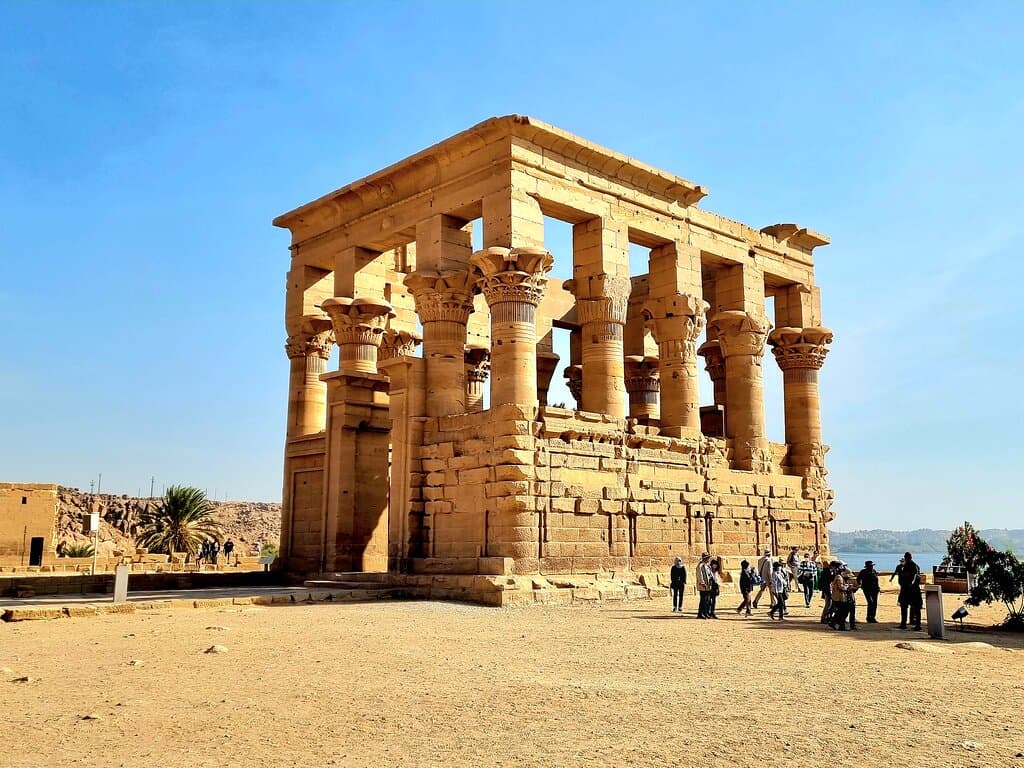
Social
from TikTok, Instagram & Reddit